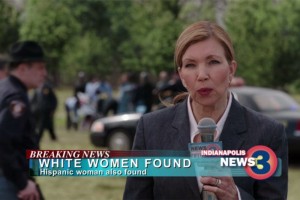In this article, the authors begin by stating that films dealt with effect, not cause. There was a belief that revolutionary cinema cannot exist before revolution. With this in mind, the authors set out to establish third cinema, which aimed to break from these norms and transform the masses into a revolutionary group of people.
Before divulging into the goals of third cinema, the authors give a brief overview of what came before it. The type of films described above fall under first cinema, which predominately came out of Hollywood. These films sought to generate ideologies such as neocolonialism and capitalism. The viewer of these films is a passive consumer. Second cinema was in reaction to this first cinema. From what the authors wrote, I gathered that second cinema was “art-house-esque,” in that they were attempts at independent film. However, second cinema was generally devoid of politics. Second cinema also operated within the System’s (meaning capitalists) distribution chains, causing it to fail as a movement. Third cinema (or cinema of liberation/guerilla cinema) arose when artists and revolutionaries began working together. Their meeting ground of the political and artistic vanguards was the struggle to seize power from the enemy.
Oftentimes in first cinema, imperialists and capitalists sought to create images of reality. These images, according to the authors, rarely reflected the actual reality. Instead these images created inaccurate stereotypes of those oppressed in order to justify oppression. Third cinema sought to deconstruct these images of reality and construct narratives that were actually true. Documentary, the authors declared, was the main basis of revolutionary filmmaking, and thus an intrinsic genre in third cinema.
In order to be successful, filmmakers needed to establish their own voice that sought to create a transformative worldview. In the middle of page 931, the authors include a quote from Marx which reads: “it is not sufficient to interpret the world; it is now a question of transforming it.” By creating their own distinctive revolutionary voices, filmmakers could do just that.
At the bottom of 931, the authors include a quote that I feel best summarizes the goals of third cinema. It reads: “The effectiveness of the best films of militant cinema show that social layers considered backward are able to capture the exact meaning of an association of images, an effect of staging, and any linguistic experimentation placed within the context of a given idea. Furthermore, revolutionary cinema is not fundamentally one which illustrates, documents, or passively establishes a situation: rather, it attempts to intervene in the situation as an element providing thrust or rectification To put it another way, it provides discovery through transformation.”
The authors then divulge into the roles that one has within third cinema. As a filmmaking process, third cinema democratizes it. Thus, everyone is expected to be familiar with all equipment. The continuity of making third cinema rests on an underground base structure with a loyal audience. Without an audience, third cinema loses its purpose. Furthermore, unlike first cinema, the audience of third cinema films is expected to be active. They are no longer spectators, but rather actors. Those who watch third cinema films are transformed into revolutionaries.
The end of the third to last paragraph of page 939 best summarizes the power of third cinema. It reads: “The filmmaker feels for the first time. He discovers that, within the System, nothing fits, while outside of and against the System, everything fits, because everything remains to be done. What appeared yesterday as a preposterous adventure, as we said at the beginning, is posed today as an inescapable need and possibility.”
I will also post my discussion question that I thought of for this article. It is: Based on my reading of the piece, third cinema sought to mobilize the masses to enact change that would alter their lives completely (i.e.: no longer operating under neocolonialism and thus no longer subjected to U.S. bourgeoisie capitalism). Do you think this type of third cinema still exists today?

